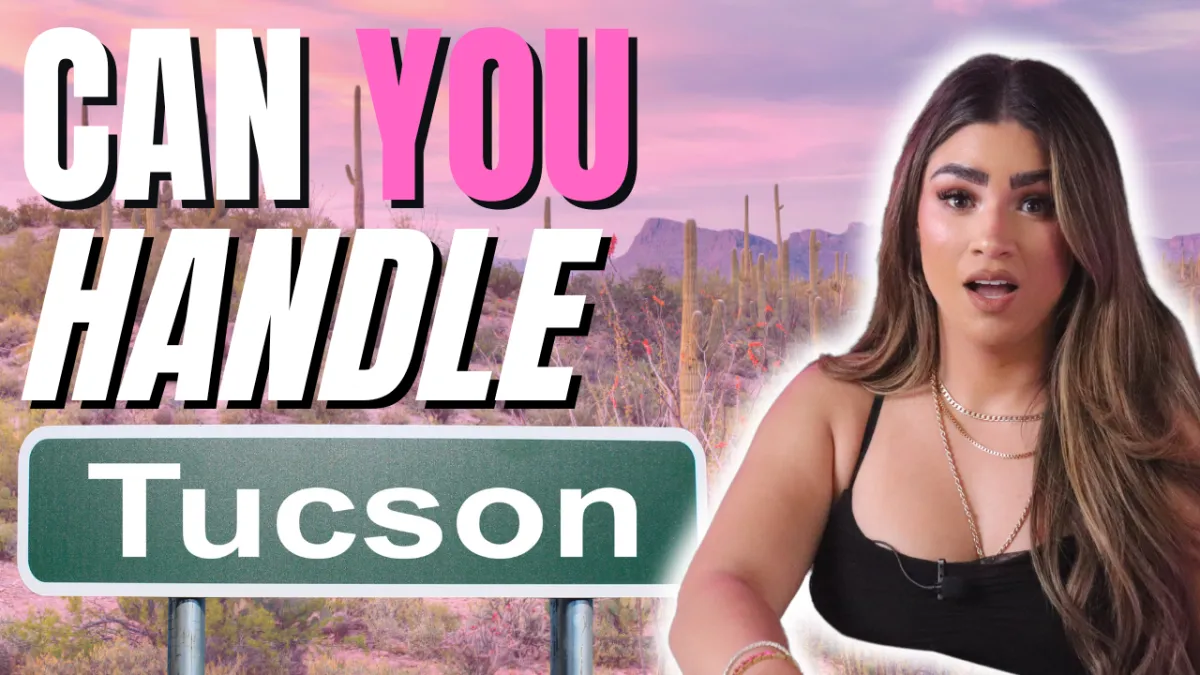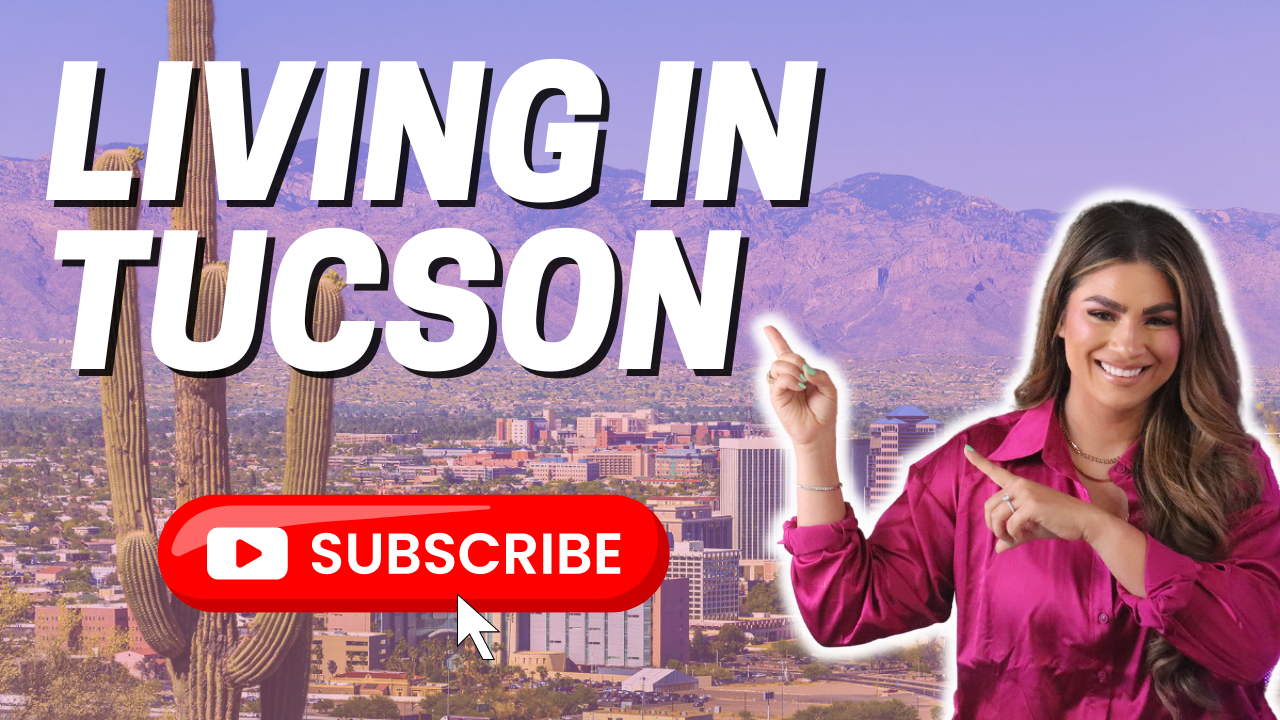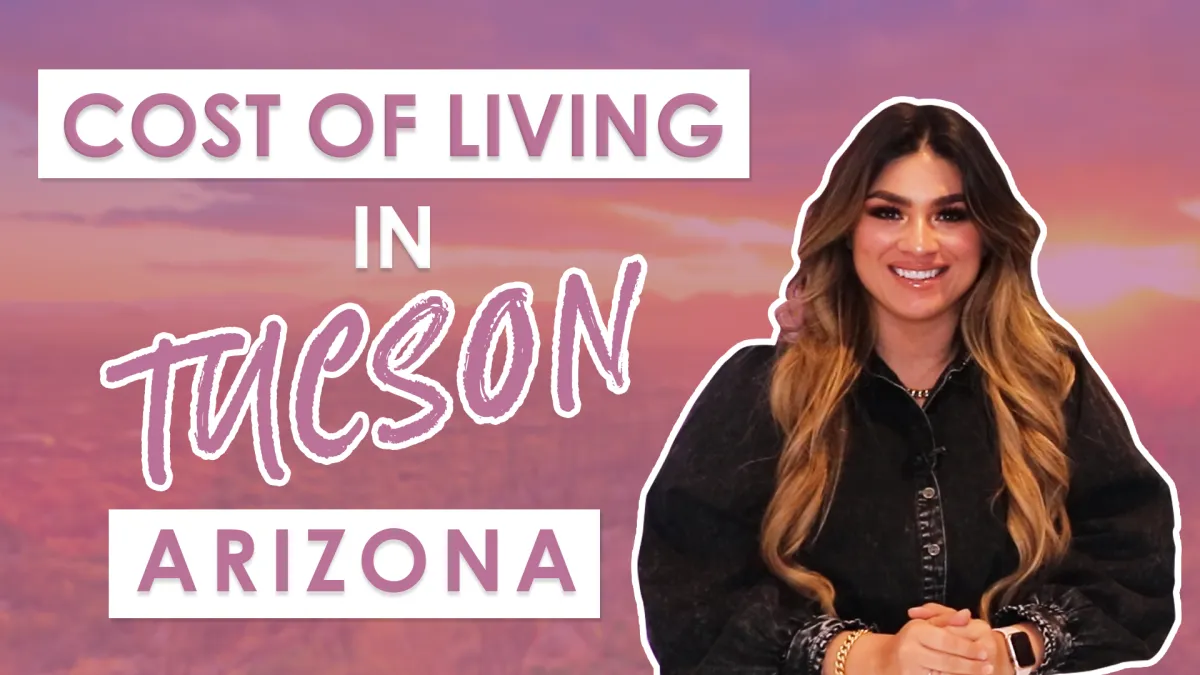LIVING IN TUCSON
BLOG

Are you thinking of moving to Tucson Arizona? Maybe you already live here! Here are the pros and cons of living in this great city. Continued...
Are curious what it costs to live in Tucson Arizona? Find out the average costs of housing, utilities, transportation, food, and taxes. Continued...
Are you thinking of moving to Tucson? Here are 5 things you need to know before you move to Tucson Arizona. Continued...
Are you thinking of moving to Tucson? Here are 5 things you need to know before you move to Tucson Arizona. Continued...

Avoid Tucson Unless You Can Handle These 10 Facts - Copy
There are a few things you’re going to want to know before moving to Tucson Arizona. In fact, there’s 10 things you want to avoid.
If Tucson has been on your mind and you’re considering moving here but you’re still on the fence, make sure you continue watching the video to hear 10 facts about Tucson and hopefully it’ll bring you clarity on if you want to move here! Some of them might be deal breakers and some may not!
Allergy Season
If you suffer from allergies, Tucson might not be the best place for you. Springtime, particularly March to May, is typically the peak allergy season in Tucson. During this period, there are increased pollen counts from various trees, including juniper, mesquite, and olive trees. Grass pollen, such as Bermuda grass, can also contribute to allergies. These pollen allergens can trigger symptoms like sneezing, runny nose, itchy eyes, and congestion.
Summer in Tucson is typically drier, and pollen levels do decrease compared to spring. However, dust and mold allergies can still cause discomfort for some people. So it’s important to keep your living space tidy and well ventilated.
Fall in Tucson tends to be mild for those who are sensitive to springtime allergens. However, weeds like ragweed can release pollen and cause allergic reactions in some people. The severity and duration of allergy seasons can vary from year to year depending on factors such as weather patterns and the overall pollen count and of course everyone is different on how they’re affected with their allergies.
Summertime Heat
Being in the sonoran desert, as expected Tucson does experience pretty intense, hot summers. The average daily high temperatures range from the mid-90s to low 100s Fahrenheit. It's pretty common for temperatures to surpass 100°F on most days. Heatwaves can also occur, with temperatures exceeding 110°F which can last for several consecutive days. For people who are not used to this kind of heat, it can be uncomfortable. Additionally, the hot weather can limit outdoor activities and require extra precautions to stay hydrated and cool. The positive side of this is that Tucson’s heat is a dry heat, meaning the majority of the time when it’s in the hotter months, there is very very low humidity which makes it a little more doable. The higher temperature months tend to only last a few months and the rest of the year is beautiful with very mild weather and lots of sunshine!
Hard Water
In Tucson, our water is known to be moderately hard to very hard, containing high levels of dissolved minerals like calcium and magnesium. These minerals are picked up as water passes through underground rock formations, such as limestone and chalk, which are abundant in the Tucson area. The presence of hard water can have several effects. One of the most noticeable is the formation of mineral deposits, also known as limescale, which can accumulate on faucets, showerheads, and other plumbing fixtures. Limescale buildup can reduce water flow, clog pipes, and decrease the efficiency of water heaters and appliances that use water. Hard water can also make it more difficult to form a lather with soap and detergents. The minerals in hard water react with soap to form a sticky residue known as soap scum, which can leave a film on dishes, laundry, and even your skin and hair. In addition to these aesthetic effects, hard water can also impact the lifespan and efficiency of appliances that use water, such as dishwashers, washing machines, and water heaters. The mineral buildup can reduce their effectiveness and require more frequent maintenance or replacement. To help mitigate the effects of hard water, many residents in Tucson use water softeners. Water softeners work by removing the calcium and magnesium ions from the water and replacing them with sodium or potassium ions through a process called ion exchange. This helps reduce the negative impacts of hard water and extends the life of plumbing and appliances. It's worth noting that while hard water may have some inconveniences, it is not considered harmful to human health. In fact, the minerals present in hard water can contribute to your daily calcium and magnesium intake, which are essential nutrients for the body.

Walkability
Overall Tucson is a bigger city with a car-centric culture, which can make it challenging for pedestrians to get around in certain areas. That being said, there are some neighborhoods in Tucson that are more walkable than others. The downtown area, for example, is relatively compact and has a grid-like street layout, making it easier for pedestrians to navigate. The University of Arizona area is also relatively walkable, with several shops, restaurants, and amenities within walking distance. Outside of these areas, however, walking can be more challenging due to the city's layout and lack of pedestrian infrastructure. Many streets in Tucson are designed primarily for cars, with few sidewalks, bike lanes, or crosswalks. This can make it challenging to walk safely, especially during busy traffic times.
The city has several multi-use paths and bike lanes, which can make it easier for pedestrians and cyclists to get around. Overall, while Tucson may not be the most walkable city in the country, there are still options for pedestrians, especially in certain neighborhoods. If you plan on walking or cycling in Tucson, it's important to be aware of your surroundings and to take precautions to stay safe on the road.
Lack of freeway
Tucson does not have a full freeway system like some of the larger cities in the United States. However, it does have several major highways and limited-access roadways that help facilitate transportation within and around the city. The primary highway in Tucson is Interstate 10 (I-10), which runs east-west and connects the city with other major cities in Arizona, such as Phoenix to the northwest and El Paso, Texas, to the east. I-10 passes through Tucson and provides a crucial transportation corridor for both local and long-distance travel. One of the downfalls is that within the city, you are traveling light by light and traffic and commute time can add up depending on the time of day.
Lack of water resources
Tucson's arid climate and limited water resources make water scarcity a pressing issue. The region receives an average annual rainfall of just 12 inches, significantly lower than the national average. To meet the city's water needs, Tucson relies on diverse sources such as the Colorado River and local aquifers. However, these sources face challenges, including drought conditions and groundwater depletion. The prolonged drought conditions, aggravated by climate change, have put a strain on Tucson's water resources. With reduced water supplies, the effects ripple through the community. Agriculture, businesses, and households face increased water scarcity, leading to economic and social challenges. The depletion of groundwater also poses threats such as land subsidence and higher costs for extraction. Fortunately, Tucson has implemented several water conservation initiatives to combat water scarcity. The Tucson Water department has launched programs promoting water-efficient practices, such as installing low-flow toilets and showerheads, conducting water audits for residential and commercial buildings, and providing rebates for water-saving appliances. Public awareness campaigns have also encouraged residents to conserve water and adopt water-wise landscaping. Recognizing the urgency of the issue, Tucson and regional water management authorities have been proactive in developing long-term water management strategies. Investments are being made in infrastructure, including water treatment and delivery systems. Additionally, alternative water sources like reclaimed water and desalination are being explored. The Tucson Active Management Area has implemented regulations to manage groundwater extraction and ensure sustainable water use. Water scarcity is a challenge that requires collective efforts.
Bugs and Critters
Tucson, like any other warm and arid region, is home to a variety of bugs and insects. The desert climate provides an ideal environment for insects such as ants, cockroaches, spiders, and scorpions. These critters can often find their way into homes and become a nuisance. Tucson's desert landscape is known to be inhabited by rattlesnakes, including the Western Diamondback Rattlesnake. While rattlesnakes play an important role in the ecosystem, their presence poses potential risks. Encountering a rattlesnake can be dangerous, as they are venomous and their bites can have serious consequences. Residents in town need to be cautious when venturing outdoors and take preventive measures to reduce the likelihood of an encounter. To help maintain a rattlesnake and scorpion-free living environment you have to be vigilant about keeping your properties clear of hiding spots like woodpiles, rocks, and debris. Sealing cracks and crevices, installing screens, and using pest control measures are all necessary steps to minimize the chances of running into them. It is also important to keep your pets away and safe from them as well, a bite from a rattlesnake or scorpion could be deadly.
Limited Seasons
Unlike many places across the United States, Tucson does lack four seasons. Meaning, we do not experience the traditional fall, winter, spring, and summer. Starting with fall, unlike many other places where the tree colors start to change and the weather starts to get chilly, Tucson’s weather stays in the mid 80’s-90’s. So if you’re looking to cool off or transition into more fall or layered clothing, you probably won’t enjoy the fall season. Jumping into the winter season, The average high temperatures range from the mid-50s to high 60s, However, temperatures can vary, and there may be occasional colder spells or warmer days during this season. We rarely ever get snow during the winter season. As winter transitions into spring, the weather stays around the low 70’s to mid 80’s but it does start to heat up. And as you know, being located in the Sonoran Desert, it’s known for its hot and dry climate. During the summer months, temperatures can get above 105°F during the day, and even stay pretty warm at night. It's important to stay hydrated and avoid being outside during the hottest part of the day during the summer.
More Slow Pace
When we think of cities, we envision energy and vibrancy. Unfortunately, Tucson can feel like an exception. The city's slow pace often translates into a lack of urgency. If you're seeking a bustling urban environment, Tucson might leave you yearning for more. One of the prevailing drawbacks of Tucson's slow pace is the limited options for entertainment and activities. While it's true that the city offers beautiful natural surroundings, the lack of bustling nightlife, cultural events, and diverse entertainment options can leave residents and visitors feeling unfulfilled. Tucson's cultural and artistic scene can be a mixed bag. While the city does have its fair share of museums and galleries, they often lack the energy and excitement found in more cosmopolitan cities. Exhibitions may be infrequent, and the limited audience can diminish the overall experience. If you're craving a vibrant and ever-evolving artistic scene, Tucson's slow pace might leave you feeling underwhelmed.
Tucson Roads
Let’s talk about potholes! Now, I'm not talking about your average, run-of-the-mill potholes. No, Tucson takes them to a whole new level. Some of these potholes can feel like craters from another planet that can destroy your tires if you’re not careful! According to a recent survey, Tucson ranks quite high in terms of pothole density when compared to other cities of similar size. These road craters can not only damage your vehicle but also test your driving skills and patience. The rapid growth of Tucson in recent years has put a strain on the city's infrastructure. While efforts are being made to improve the road network, it takes time, resources, and careful planning to address the increasing traffic demands effectively. Speaking of improvements, let's not forget the road construction projects scattered throughout the city. Although these projects aim to enhance the road infrastructure, they can be a nuisance for drivers, leading to detours, frustration, and they take forever to finish. The city of Tucson is aware of the issues and has implemented plans to improve road conditions, expand infrastructure, and reduce congestion. So, while the roads in Tucson may currently leave much to be desired, change is on the horizon. With ongoing efforts to make the city's infrastructure more efficient, Tucson's roads may soon hopefully become smoother and more enjoyable for everyone.
Now if these 10 facts didn’t deter you away from making the move to Tucson, I would love to talk with you! I’m happy to answer any questions you might have. Feel free to text, call, or email me!
Give Me A Call Today!
(520) 335-0350
DO YOU HAVE ANY REAL ESTATE QUESTIONS?
Give Me a Call, Text or Email!
Rachel Clark - LPT Realty
REALTOR® | SA688048000
Phone: (520) 335-0350
Email: [email protected]
1860 E River Rd. Suite 325
Tucson, AZ 85718

©2022 | RachelTucsonRealtor.com | All Rights Reserved.





